In the past three months over 17 Indian students have been assaulted in Melbourne and Sydney in a pattern of crimes which have become infamously known as “curry bashing”. Since then the 95,000 strong Indian student community in Oz has suffered a disproportionate share of violent crimes. David Wightman reports from Canberra
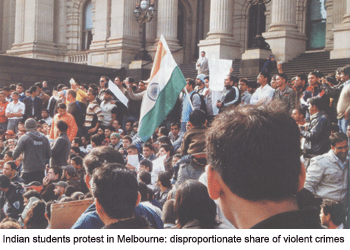 The best available evidence is grainy television footage captured by a CCTV camera inside a local train speeding through the neatly-landscaped city of Melbourne (pop. 3.9 million), Australia. In a world increasingly watching everyone’s movements, it depicts the nightmare of every Indian abroad — unprovoked assault and battery. Late at night on May 9, Sourabh Sharma, a 21-year-old student from Chandigarh pursuing a hospitality degree at a Melbourne college, was returning to his lodgings after working an evening shift at a Kentucky Fried Chicken restaurant in the city. He was listening to the radio on his phone, minding his own business and carrying AUS$650 (Rs.25,000) in cash to pay his room rent and tuition fees.
The best available evidence is grainy television footage captured by a CCTV camera inside a local train speeding through the neatly-landscaped city of Melbourne (pop. 3.9 million), Australia. In a world increasingly watching everyone’s movements, it depicts the nightmare of every Indian abroad — unprovoked assault and battery. Late at night on May 9, Sourabh Sharma, a 21-year-old student from Chandigarh pursuing a hospitality degree at a Melbourne college, was returning to his lodgings after working an evening shift at a Kentucky Fried Chicken restaurant in the city. He was listening to the radio on his phone, minding his own business and carrying AUS$650 (Rs.25,000) in cash to pay his room rent and tuition fees.
Five other young men were commuting in the rail car — three of them obscured by hooded sweatshirts. The footage depicts them talking to Sharma, who is almost invisible at first. Suddenly there is a flurry of movement and he comes into view, with the assailants raining blows on his prone body, punching and kicking him. One of the attackers rifles through Sharma’s backpack while the others continue to kick and thrash him, using the handrails and benches of the speeding train to balance themselves and give greater weight to their blows. Behind them the train rocks back and forth on its rails. Though there were other commuters in the coach, nobody came to Sharma’s rescue.
In normal circumstances, the late night attack on this lone Indian student far from home would have been entered into the city’s crime records as a simple robbery. But circumstances are not normal for the growing number of Indian students lured by high-pitched advertising campaigns to acquire world-class English medium professional education in Australia at half the price of similar education in Britain and the US, traditional study destinations for the 100,000 Indians who cross the seas annually to study abroad.
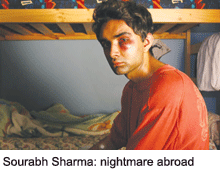 Sharma was not just another target of violence in Australia (pop. 22 million). In the past three months over 17 Indian students have been assaulted in Melbourne and Sydney in a pattern of crimes which have become infamously known as “curry bashing”. Within a month of the attack on Sharma, Baljinder Singh, a 25-year-old student of the Australian Institute of Technology, Melbourne was stabbed with a screwdriver, as was Shravan Kumar, a student of Cambridge International College, while Rajesh Kumar, a hospitality degree student suffered 30 percent burns when a petrol bomb was hurled at him in Sydney.
Sharma was not just another target of violence in Australia (pop. 22 million). In the past three months over 17 Indian students have been assaulted in Melbourne and Sydney in a pattern of crimes which have become infamously known as “curry bashing”. Within a month of the attack on Sharma, Baljinder Singh, a 25-year-old student of the Australian Institute of Technology, Melbourne was stabbed with a screwdriver, as was Shravan Kumar, a student of Cambridge International College, while Rajesh Kumar, a hospitality degree student suffered 30 percent burns when a petrol bomb was hurled at him in Sydney.
According to figures released by the police of Victoria — one of Australia’s six states and three territories — of which Melbourne is the administrative capital, its Indian student population is 46,000, of whom 1,447 have been victims of violent crimes in 2007-2008. Since then the phenomenon has spread countrywide with the 95,000-strong Indian students community suffering a notably disproportionate share of violent crimes. Unsurprisingly, the overwhelming majority of Indian students in Australia, based on reports of victims, believe these are racist hate crimes with which the police is sympathetic, if not complicit. These suspicions were confirmed on May 31, when the Melbourne police used excessive force to break up a peaceful public demonstration in central Melbourne to protest government inaction.
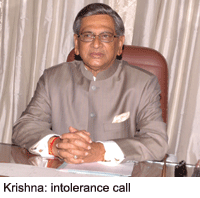 But while in Australia, a multi-cultural country of immigrants, there is government and societal reluctance to admit that recent violence against Indian students is racially motivated, back home in India the spate of crimes has outraged public, media and later, government opinion. With the media, particularly the television news channels going to town on this issue, the newly-installed Congress-led UPA government was forced to react. Prime minister Manmohan Singh telephoned his Australian counterpart Kevin Rudd to express concern over the rising incidence of crimes against Indian students there. While Rudd reassured New Delhi that Australia isn’t a racist nation, and promised that the culprits behind the attacks will be brought to book, S.M. Krishna, India’s newly appointed external affairs minister, isn’t leaving anything to chance. He has instructed the Indian high commission in Australia to keep a close watch on any targeting of Indian students.
But while in Australia, a multi-cultural country of immigrants, there is government and societal reluctance to admit that recent violence against Indian students is racially motivated, back home in India the spate of crimes has outraged public, media and later, government opinion. With the media, particularly the television news channels going to town on this issue, the newly-installed Congress-led UPA government was forced to react. Prime minister Manmohan Singh telephoned his Australian counterpart Kevin Rudd to express concern over the rising incidence of crimes against Indian students there. While Rudd reassured New Delhi that Australia isn’t a racist nation, and promised that the culprits behind the attacks will be brought to book, S.M. Krishna, India’s newly appointed external affairs minister, isn’t leaving anything to chance. He has instructed the Indian high commission in Australia to keep a close watch on any targeting of Indian students.
“I have been appalled by the attacks on our students in Melbourne. Our consul general in Melbourne is in touch with our students and the state police. We will impress upon the Australian authorities that such attacks should not be tolerated and that it is their respon-sibility to ensure the well-being and security of our students in Australia,” Krishna told reporters on June 2.
However even as Australia’s prime minister and other top politicos maintain that the attacks are routine rather than racially-motivated hate crimes, it may be recalled that Australia was a 17th century British penal colony to which hardened criminals were exiled from the mother country, and has a history of institutional racism dating back to the earliest days of settlement which almost wiped out the native aboriginal population. Subsequently, severe anti-Asian, particularly anti-Chinese, policies were introduced during the gold rush of the 1850s. Thereafter for most of the 20th century Australia had an official policy favouring European immigration, laws that reportedly inspired the Boers of South Africa to introduce the infamous apartheid system.
Instituted in 1901, the White Australia policy restricted immigration of non-whites, who according to the policy’s architect, Alfred Deakin (1856-1919), constituted a threat to Australian society. “It is not the bad qualities, but the good qualities of these alien races that make them so dangerous to us,” Deakin explained. “It is their inexhaustible energy, their power of applying themselves to new tasks, their endurance and low standard of living that make them such competitors.” Though the White Australia policy was diluted over the years — in 1950 students from Asia were admitted into Australian universities — it was not until 1973 that the policy was finally abolished.
Although the need for skilled labour to develop this continent-sized country with a tiny population forced more recent governments in Canberra to abandon the White Australia policy and adopt more liberal immigration policies, ethnic tensions continue to simmer beneath the surface of this beautiful — almost paradisical — country.
In December 2005, a series of confront-ations between white Aussies and Lebanese immigrants led to several days of violent riots in the Sydney suburb of Cronulla. At the height of the riots, 5,000 white Australians marched the streets, randomly attacking people with Middle East features. Radio broadcasts whipped up hysteria, while provocateurs spread SMS messages of hate, rallying people to “Come to Cronulla this weekend to take revenge… to support Leb and wog bashing day.” Some in the crowd wore t-shirts with openly racist messages such as ‘Ethnic Cleansing Unit’, while neo-nazis distributed hate pamphlets. Attempts to end the violence, including a mass anti-racism rally in Melbourne that attracted 2,000 people, drew mixed response.
Four years later, the legacy of Cronulla is unresolved, with ‘Cronulla’ becoming a byword for the country’s dormant racial tensions. Surprisingly neither a judicial nor government enquiry into the Cronulla riots was commissioned, nor was any other institutional intervention initiated to ascertain the root cause of the riots.
With such a troubled racial history, it’s easy to understand why the spectre of racism is being raised in the current series of attacks against Indian students. For Sam Varghese, an Indian-Australian and online sub-editor of The Age, Melbourne’s most widely-read daily newspaper, these attacks are overtly racist. Writing at the height of the attacks (June 2), Varghese outed racist undercurrents in Australian society. “Everyone, the police first and foremost, is pussyfooting around the problem and trying to characterise the naked violence as anything but an expression of racial hostility,” he wrote. “This will embolden others in other regions of the country who have feelings of the same kind to express themselves with sticks, stones and knives.”
But this viewpoint is not fully representative of the 200,000-strong Indian community in Oz. Comments Amit Menghani, president of the Federation of Indian Students of Australia (FISA) and a student of the Royal Melbourne Institute of Technology: “Race plays a major part in such attacks but it isn’t the only motivation. Violence has been aggravated because of lack of strong government action against the perpetrators. FISA has demanded that university and government authorities sensitively integrate international students into the country’s higher education space and into society in general. Their failure to do so is responsible for the rising violence against Indian students.”
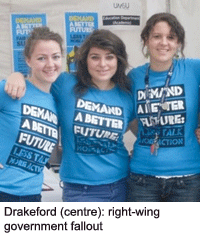 Carla Drakeford, president of the University of Melbourne Students Union, concurs. “In the beginning it was assumed that attacks on Indian students were violent but secular robberies. But now with the violence becoming more planned and targeted, it’s evident that there’s deep resentment within Australian society against relatively new immigrants. The nearly 11-year rule of former prime minister John Howard’s right-wing government has played a major role in shaping public opinion that doesn’t understand the values of cultural diversity and racial tolerance. Now, with a liberal labour government in power, this is an opportune time for the authorities to address the root causes of resurgent racial intolerance within Australian society,” she says.
Carla Drakeford, president of the University of Melbourne Students Union, concurs. “In the beginning it was assumed that attacks on Indian students were violent but secular robberies. But now with the violence becoming more planned and targeted, it’s evident that there’s deep resentment within Australian society against relatively new immigrants. The nearly 11-year rule of former prime minister John Howard’s right-wing government has played a major role in shaping public opinion that doesn’t understand the values of cultural diversity and racial tolerance. Now, with a liberal labour government in power, this is an opportune time for the authorities to address the root causes of resurgent racial intolerance within Australian society,” she says.
The debate raging ever since in newspaper columns, television programmes, internet chatrooms and the blogosphere on whether the recent flurry of attacks on Indian students are racially- motivated, is not one-sided. Akash Arora, sub-editor of the London-based Wallpaper magazine who was born in Bhopal and read for Masters in journalism in Sydney, argues: “There are goons in every society, but to label every assault racist is ridiculous. A 17-year-old boy was stabbed to near-death in a Sydney park during the week Indian students were protesting in Melbourne. Because the victim was an Aussie it was tagged a ‘criminal attack’. Had the victim been an Indian it would have been a racist attack. The victim was just in the wrong place at the wrong time. The perpetrator was not racist, his victim could have been anyone.”
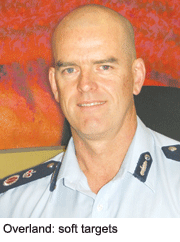 Victoria police commissioner Simon Overland ascribes the seemingly racist attacks on Indian students to the rising incidence of crime in Oz. Police statistics indicate that in the suburbs of Melbourne where the attacks on Indian students were concentrated, incidents of violent crime have increased by 100 percent over the past eight years. “There has been a rise in street level robberies with people walking alone seen as soft targets, particularly if they are carrying laptops, mobile phones and MP3 players,” Overland wrote in the Herald Sun (June 2). In the Indian media, Overland’s remarks have been interpreted to mean that Indians are “soft targets” because they overtly carry expensive items such as laptops, MP3 players and iPods while travelling late at night.
Victoria police commissioner Simon Overland ascribes the seemingly racist attacks on Indian students to the rising incidence of crime in Oz. Police statistics indicate that in the suburbs of Melbourne where the attacks on Indian students were concentrated, incidents of violent crime have increased by 100 percent over the past eight years. “There has been a rise in street level robberies with people walking alone seen as soft targets, particularly if they are carrying laptops, mobile phones and MP3 players,” Overland wrote in the Herald Sun (June 2). In the Indian media, Overland’s remarks have been interpreted to mean that Indians are “soft targets” because they overtly carry expensive items such as laptops, MP3 players and iPods while travelling late at night.
But while it’s true that most Indian students in Australia are from affluent middle class and upper-middle class families, there is also a sizeable minority of students on tight budgets who need to work post college hours to fund their education. These students often take up low-end jobs in restaurants and department stores working late hours.
“It’s not unusual for international students to work night jobs. Indian students in particular work late, in the security industry, or in restaurants or convenience stores, often for low wages. These are jobs that no Australian — indeed no Chinese or Vietnamese — would do. Because they work late, Indian students have to ride the trains at night and become easy prey,” says Robert Palmer, the Melbourne-based executive director of Overseas Students Support Network Australia (OSSNA).
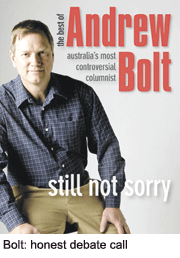 Meanwhile preliminary investigations into the identity of the attackers indicate that it can’t be presumed they were white Aussies. For instance, closer inspection of the television footage of the attack on Sourabh Sharma shows that his assailants weren’t white Australians but people with South-east Asian characteristics. Moreover there are reports of Lebanese Australians committing subsequent assaults on Indian students in Sydney. “Indian students themselves are blaming many of the attacks on gangs of newcomers from Africa or the Pacific Islands,” argues Andrew Bolt, a popular columnist of the Herald Sun, a Melbourne-based tabloid. “To attribute the attacks to some notion of institutional racism in Australia is unfair. The real issue here is how to improve policing and public safety for everyone. A more honest debate on who is actually committing the attacks is necessary, as is a broader attempt to civilise those living on the community’s margins,” says Bolt, who adds that almost all of the attacks have occurred in poorer, mostly immigrant-intensive suburbs of Australia’s larger cities.
Meanwhile preliminary investigations into the identity of the attackers indicate that it can’t be presumed they were white Aussies. For instance, closer inspection of the television footage of the attack on Sourabh Sharma shows that his assailants weren’t white Australians but people with South-east Asian characteristics. Moreover there are reports of Lebanese Australians committing subsequent assaults on Indian students in Sydney. “Indian students themselves are blaming many of the attacks on gangs of newcomers from Africa or the Pacific Islands,” argues Andrew Bolt, a popular columnist of the Herald Sun, a Melbourne-based tabloid. “To attribute the attacks to some notion of institutional racism in Australia is unfair. The real issue here is how to improve policing and public safety for everyone. A more honest debate on who is actually committing the attacks is necessary, as is a broader attempt to civilise those living on the community’s margins,” says Bolt, who adds that almost all of the attacks have occurred in poorer, mostly immigrant-intensive suburbs of Australia’s larger cities.
On the basis of police lassitude and foot-dragging, even if the great majority of Indian students suspect institutional racism, one can’t rule out that this phenomenon is the handiwork of youth gangs attacking easily-identifiable soft targets, with the attackers more likely to be hardened criminals rather than racist hate-mongers. Thus while neo-nazis and white supremacists are generally easy to track and apprehend, unrelated gangs of young hoodlums can easily melt into their suburban stomping grounds. That’s why the great majority of Australia’s embarrassed middle class believes that the solution to this problem is better policing and tougher sentences for those convicted of hate crimes.
A first step towards introducing tougher sentencing laws has already been taken. On June 2 Victoria’s attorney general, Rob Hulls, announced an amendment to the Sentencing Act requiring judges to take into account hatred for, or prejudice against, a particular group of people while pronouncing prison sentences. Hulls also asked the Sentencing Advisory Council for advice on whether there is a need for specific “hate crime” offences in law. And to combat rising crime, racist or otherwise, Victoria police commissioner Simon Overland has promised to step up patrols, not just of beat cops but of special forces using police resources such as helicopters and horse-mounted units as well. Moreover in an effort to promote multiculturalism and tolerance, Victoria’s premier John Brumby has met with community groups and Indian officials including the high commissioner, Sujatha Singh, and proposed a ‘Harmony Walk’.
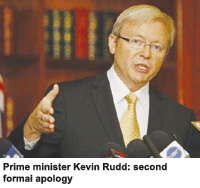 Simultaneously at the federal level in Canberra, prime minister Kevin Rudd has taken an active role in mediating the crisis, communi-cating directly with his Indian counterpart Dr. Manmohan Singh. “In this country everyone is welcome,” Rudd told a nationally televised phone-in show. “For the 95,000 Indian students in this country, they are equally welcome. If any act of violence is committed against any student in your community, the first and immediate action has to be to get straight to the police,” he advised.
Simultaneously at the federal level in Canberra, prime minister Kevin Rudd has taken an active role in mediating the crisis, communi-cating directly with his Indian counterpart Dr. Manmohan Singh. “In this country everyone is welcome,” Rudd told a nationally televised phone-in show. “For the 95,000 Indian students in this country, they are equally welcome. If any act of violence is committed against any student in your community, the first and immediate action has to be to get straight to the police,” he advised.
The top-level attention that intensifying violence against Indian students down under has attracted is warranted. The Oz establishment is well-aware that over the past decade, higher education provision has become Australia’s third-largest export industry, generating AUS$15.5 billion (Rs.59,304 crore) from some 430,000 international students last year. Of this huge amount, 95,000 Indian students in Australia contribute an estimated $2 billion (Rs.7,655 crore) annually, with the number of Indian students enroled in Australian universities having increased 50 percent over the past five years. With tuition fees and living expenses spiraling in British and American universities, English-speaking Australia offers a more affordable option to Indian students. Moreover aggressive marketing by Australian universities in the Indian subcontinent by way of road shows and employment of Indian student recruitment firms and agents, has helped swell the population of Indian students in Oz.
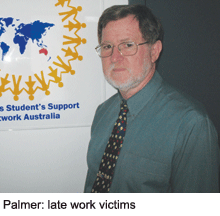 With violent assaults and thuggery highlighting the large numbers of Indian students in Australia, stories of unscrupulous education agents deceiving susceptible students from small towns in India to sign up for suspect-quality education are multiplying. According to Robert Palmer, director of OSSNA, more than 1,000 students who have contacted OSSNA have complained about being misled by education agents in their home countries. “It’s like a gold rush. Students abroad are getting the message that the streets in Australia are paved with gold. They are shown photographs of historic Melbourne town hall or the Flinders Street railway station and told that these are university facilities. Some students who have paid tuition fees in advance are now becoming aware that many of these down-market institutions are without government accreditation. It’s a lucrative business for agents, who get paid by both the educational institution and the student. For public institutions, education agents get upto AUS$1,200 per student (Rs.45,935), while for private colleges the fee can go up to 35 percent of the first semester tuition fee. Though education institutions are required by law to closely monitor education agents, university managements seldom do as they heavily rely on these agents for foreign students,” says Palmer.
With violent assaults and thuggery highlighting the large numbers of Indian students in Australia, stories of unscrupulous education agents deceiving susceptible students from small towns in India to sign up for suspect-quality education are multiplying. According to Robert Palmer, director of OSSNA, more than 1,000 students who have contacted OSSNA have complained about being misled by education agents in their home countries. “It’s like a gold rush. Students abroad are getting the message that the streets in Australia are paved with gold. They are shown photographs of historic Melbourne town hall or the Flinders Street railway station and told that these are university facilities. Some students who have paid tuition fees in advance are now becoming aware that many of these down-market institutions are without government accreditation. It’s a lucrative business for agents, who get paid by both the educational institution and the student. For public institutions, education agents get upto AUS$1,200 per student (Rs.45,935), while for private colleges the fee can go up to 35 percent of the first semester tuition fee. Though education institutions are required by law to closely monitor education agents, university managements seldom do as they heavily rely on these agents for foreign students,” says Palmer.
According to government estimates, only 30 percent of the 95,000 Indian students in Australia are enroled in degree granting universities, with the rest studying in smaller education institutes and vocational schools. Some of these smaller institutes are fly-by-night shopfronts luring unsuspecting small-town Indian students through greedy agents who promise a “great Western education”.
In a recent speech to parliament, Australia’s education minister Julia Gillard said that the government intends to enforce tighter controls over education institutions and their recruitment agents abroad. “As part of a strengthened compliance regime, we are increasing our scrutiny of education providers,” she announced. “The Australian government will not hesitate to use the full extent of its legislative powers to punish those that breach the law.”
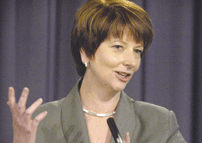 Gillard, who is also the deputy prime minister and whose constituency includes some of the areas where Indian students have been assaulted, has also promised to hold public forums on the issues raised by the attacks. “The government will invite international student representatives to participate in a round table to discuss issues affecting their study experience, such as accommodation, welfare and safety,” the minister told Parliament.
Gillard, who is also the deputy prime minister and whose constituency includes some of the areas where Indian students have been assaulted, has also promised to hold public forums on the issues raised by the attacks. “The government will invite international student representatives to participate in a round table to discuss issues affecting their study experience, such as accommodation, welfare and safety,” the minister told Parliament.
While not ruling out racial hatred as a motive behind the flurry of attacks against Indian students down under, some social scientists attribute the rise of anti-Indian sentiment to the cultural maladjustment of Indian students in Australian society. A common criticism against Indian students in Australia is that they cling to their own cliques and culture and refuse to identify or integrate with Australian culture, traditions and society.
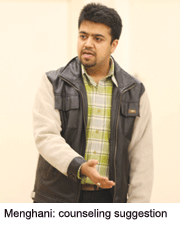 Amit Menghani, president of Federation of Indian Students of Australia, suggests that all students aspiring to study in Oz must be counseled about the host country’s culture and behavioural norms before their departure. “Students in India should be counseled about the situation in Australia. This is not the fantasy land recruitment agents promise them, but a real place with problems. They must come prepared to make adjustments and learn some basic cultural and social rules which will help them integrate into university life and larger society.”
Amit Menghani, president of Federation of Indian Students of Australia, suggests that all students aspiring to study in Oz must be counseled about the host country’s culture and behavioural norms before their departure. “Students in India should be counseled about the situation in Australia. This is not the fantasy land recruitment agents promise them, but a real place with problems. They must come prepared to make adjustments and learn some basic cultural and social rules which will help them integrate into university life and larger society.”
David Barrow, president of the National Union of Students, is optimistic that the furore over attacks on Indian students will have a positive outcome. “Indian students arriving in Australia will be better briefed in future. There is an understandable gap of knowledge between local and international students, and the Australian government has promised to close this gap. The government, universities and police have their responsibilities, as do international students, to keep themselves aware and safe. But the wider Australian public also has a role to play. While the country most certainly has a racist past, more and more Australians are standing up to racist elements. We opposed apartheid, began reconciliation with indigenous peoples, threw out the far-right One Nation party and will stand strongly behind international students when they are attacked,” says Barrow.
The huge storm precipitated by the wave of attacks on Indian students in Australia has prompted suspicion within the Indian government and the public, that the Australian government isn’t doing enough. The general public mood in India is that the large majority of Australians haven’t unequivocally condemned the attacks. For instance, at the street protests organised by FISA in Melbourne, only a handful of Aussie students showed up to express solidarity, and peace vigils, inter-community meets and anti-racism protests have been few and far between. With Australia’s painstakingly built image as a affordable and safe education destination for international students, particularly from the subcontinent, taking a severe beating, the government and people of the sixth continent need to move beyond platitudes to address-ing the issues of prejudice, intolerance, and rising crime within their society.
Simultaneously, India must address the reasons why its youth are fleeing the country’s 431 universities and 21,000 colleges in such large numbers to alien and hostile terrains in search of quality higher education.
With Summiya Yasmeen (Bangalore)